According to the statistics, ChatGPT has emerged as the fastest-growing app in the world, as it has recorded 100 users in 2 months. Further, as per the reports of Similar Web, this chatbot had clocked 13 million users in January and has surpassed other social applications like Instagram, TikTok, and WhatsApp in terms of usage in a relatively shorter duration of time.
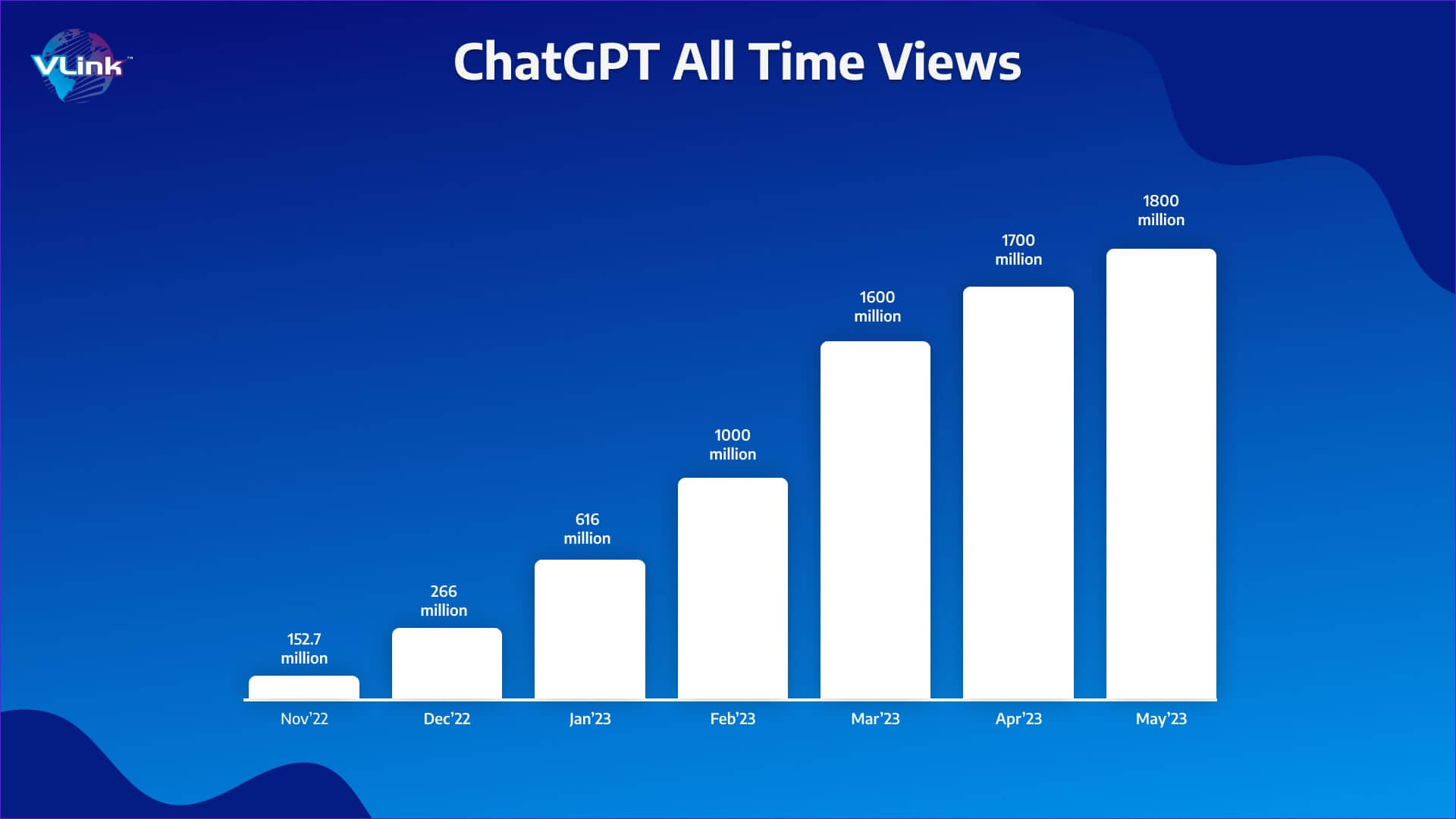
In fact, some people are comparing this breakthrough caused by the launch of ChatGPT to the revolution created by the launch of the computer and the internet. Now, let us discuss in detail about ChatGPT-
What is ChatGPT?
Launched in November 2022, ChatGPT is an AI-based chatbot and is a large language model that helps generate human-like text by using machine learning with amazing accuracy and fluency. It has been programmed using various techniques, and it has the capability of processing billions of words in a matter of seconds.
This programming has been used to power this chatbot with large chunks of data. Thus, it allows ChatGPT to tap into a vast quantity of vocabulary and information to dispense knowledge in written format. Just a mere human prompt is needed in the form of a question, and this highly efficient chatbot is ready with quality content in the form of blogs, scripts, and even poems.
AI ChatGPT has proven to be a revolutionary discovery in the sphere of Information Technology as it is a user interface that allows the user to experiment with direct interaction. Not just in creating content, but ChatGPT is also highly proficient in finding and fixing a bug in a code. ChatGPT breeds innovation as it possesses the ability to hold conversational text interactions with users with the help of artificial intelligence.
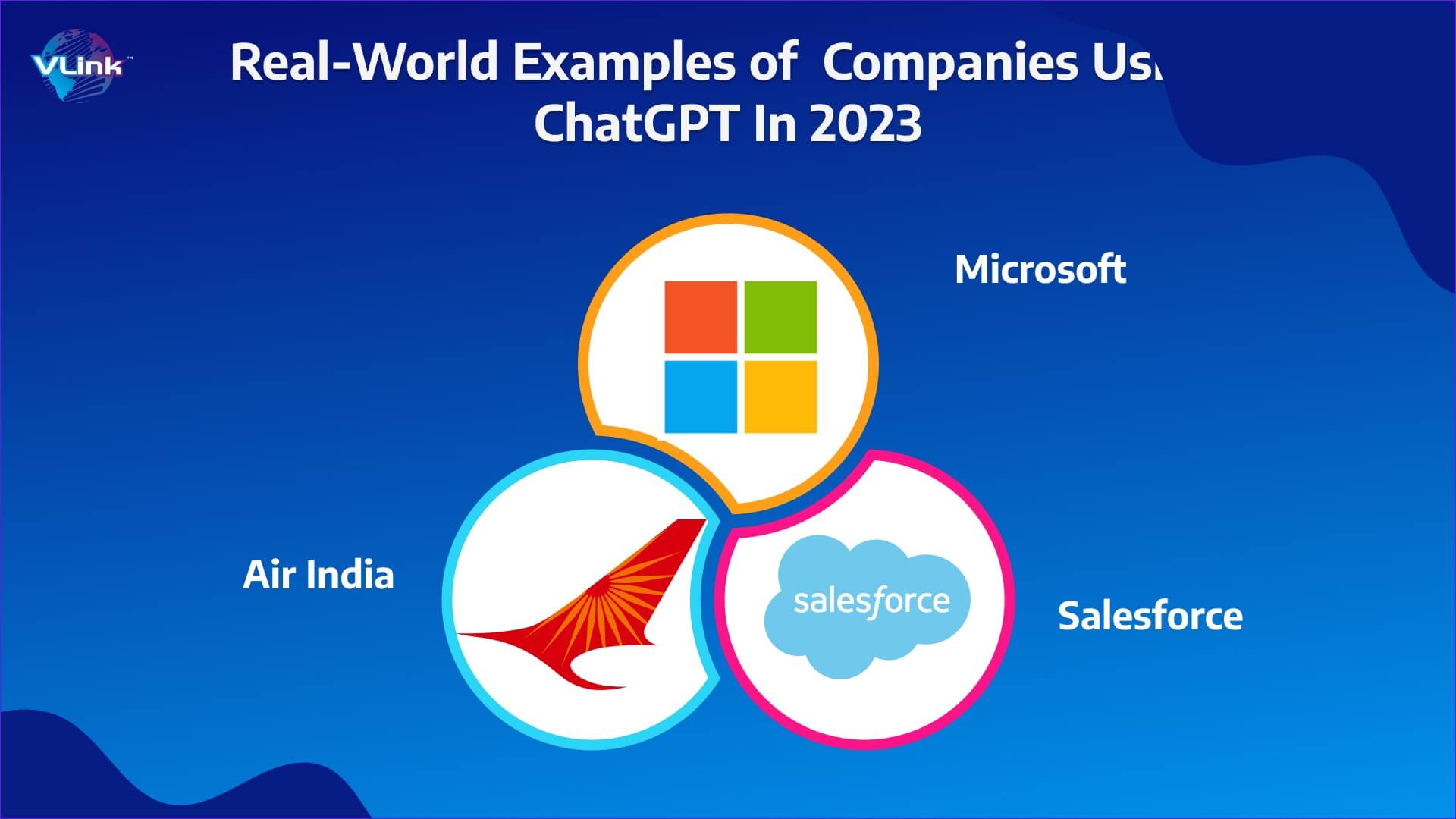
Also Learn: How Much Does It Cost to Build an AI Voice Generator App Like Speechify?
History of ChatGPT
ChatGPT Chatbot was initially conceptualized in 2018, and its announcement came in May 2020. It is an upgraded version of GPT-2 (Generative Pre-Trained Transformer 2) and has been developed by OpenAI.
Google introduced a neural network architecture called 'Transformer' in the paper, and that became the inspiration behind the model of ChatGPT. Overall, ChatGPT is a fine-tuned variant of GPT-3, and it was trained on a variety of internet text. Thus, it acquired a unique ability to process sequential data and has today become one of the most powerful language models of our time.
Also Learn: The importance of AI & data analytics in legaltech.
How was ChatGPT developed & how does it work?
ChatGPT was developed using a unique fusion of Supervised Learning and Reinforcement Learning, and this combination plays a key role in its fine-tuned version. The Reinforcement Learning technique allows the usage of human feedback, and ChatGPT works by using a massive dataset of text. This text is pre-trained using a deep neural network, which is comprised of a series of layers that help in generating the output.
ChatGPT API is adept at generating coherent sequences of text as a neural network is used to comprehend the knowledge. The AI software of GPT carries out the process of encoding and decoding the information. Just like our brains are wired to use our intellect and past experiences to make decisions, ChatGPT has been trained to respond to real human interactions and give the output.
What are the capabilities of ChatGPT?
- Conversational Engagement: ChatGPT can engage in human-like conversations, making it suitable for chatbots, virtual assistants, and customer support applications.
- Content Generation: It can generate text content, including articles, essays, code snippets, and more, on a wide range of topics.
- Language Translation: ChatGPT can translate text between different languages with a high degree of accuracy.
- Answering Questions: It is adept at providing answers to factual questions, making it a valuable resource for quick information retrieval.
- Creative Writing: ChatGPT can assist writers by generating creative ideas, storylines, and character dialogues.
What are the Advantages of ChatGPT?
- Easy to Access- This chatbot is easy to access as it is readily available on the internet, and everyone can use it.
- Quicker Response Time: ChatGPT is equipped with the ability to process the requests of users in a faster manner. Also, it generates responses in a very fast way.
- Improved Productivity: With the implementation of ChatGPT, businesses can improve the productivity of their employees. This results in enhancing the overall efficiency of the organization.
- Enhanced Customer Service: The most important parameter for ensuring customer satisfaction is providing timely support. ChatGPT helps in doing that as it gives the customers an individualized experience along with tailored responses.
- Increased Accuracy: Since this model can gather the data in a short duration of time and produce it in a grammatically correct as well as comprehensive manner, the companies are gaining a lot of accuracy as far as the coherence of the text is concerned.
- Interactive Experience: ChatGPT has the quality of engaging the clients in an effective manner that helps the customers to attain an interactive experience. As a result, it helps the companies in expanding their customer base.
- Upgraded Scalability: Since Open AI is constantly upgrading the functionality of ChatGPT and adding on to the features, it may not be wrong to say that ChatGPT can help companies enhance their scalability.
What are the Disadvantages of ChatGPT?
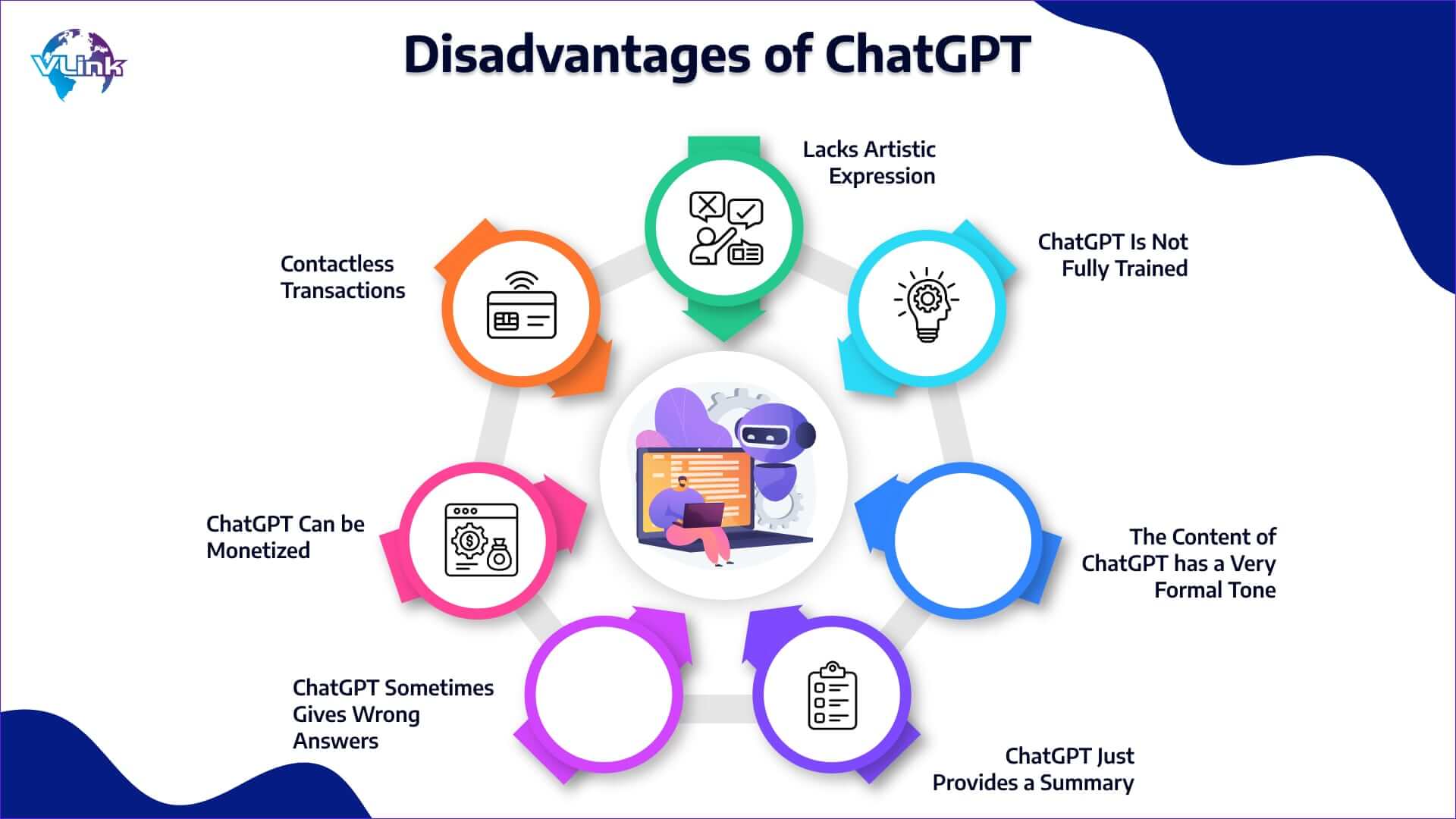
Although ChatGPT has been on the rise as far as popularity is concerned, there are some loopholes in the content delivered by this chatbot. Let us discuss them below-
Lacks Artistic Expression
As per the feedback of several artists, ChatGPT needs to include the genuine traits associated with artistic expression. ChatGPT can't create content that can connect with people at an emotional level, which human writers can do.
ChatGPT Is Not Fully Trained
As per the reports, ChatGPT is still in the process of being trained to meet the diverse demands of the market. Thus, it needs several features and is sometimes not able to deliver the expected results.
The Content of ChatGPT has a Very Formal Tone
The content generated by ChatGPT needs to be more formal as it lacks various elements of engaging content like analogies and humour. On the other hand, the human approach to responding to queries has a very informal tone to it, which makes the content connect easily with the user.
ChatGPT Provides a Summary
Various experts or subject-matter experts have often complained that ChatGPT lacks in-depth knowledge of multiple subjects. The reason behind this is that ChatGPT summarizes the content and usually needs help to match up to the understanding of the experts in the field.
ChatGPT Sometimes Gives Wrong Answers
There have been several instances in which ChatGPT has given inaccurate answers to the queries posed in front of it. It leads to irrelevant content being churned out by this chatbot.
ChatGPT Can be Monetized
Currently, ChatGPT is free of cost, but after a certain duration of time, there is a strong possibility that the chatbot will be monetized. It will lead to a lesser number of people being able to access ChatGPT, and hence, it will lead to several hassles.
What are the applications of ChatGPT?
The versatility of ChatGPT makes it applicable in various domains:
- Customer Support: Chatbots powered by ChatGPT can provide round-the-clock customer support, answering queries and resolving issues.
- Content Generation: It aids content creators in generating high-quality articles, blog posts, and marketing materials.
- Language Translation: Businesses can use ChatGPT for instant language translation to cater to a global audience.
- Education: It can serve as a virtual tutor, helping students with explanations and solutions to academic problems.
- Research: Researchers can use ChatGPT to analyze and summarize large volumes of text data.
Which Chat Bots are Similar to ChatGPT?
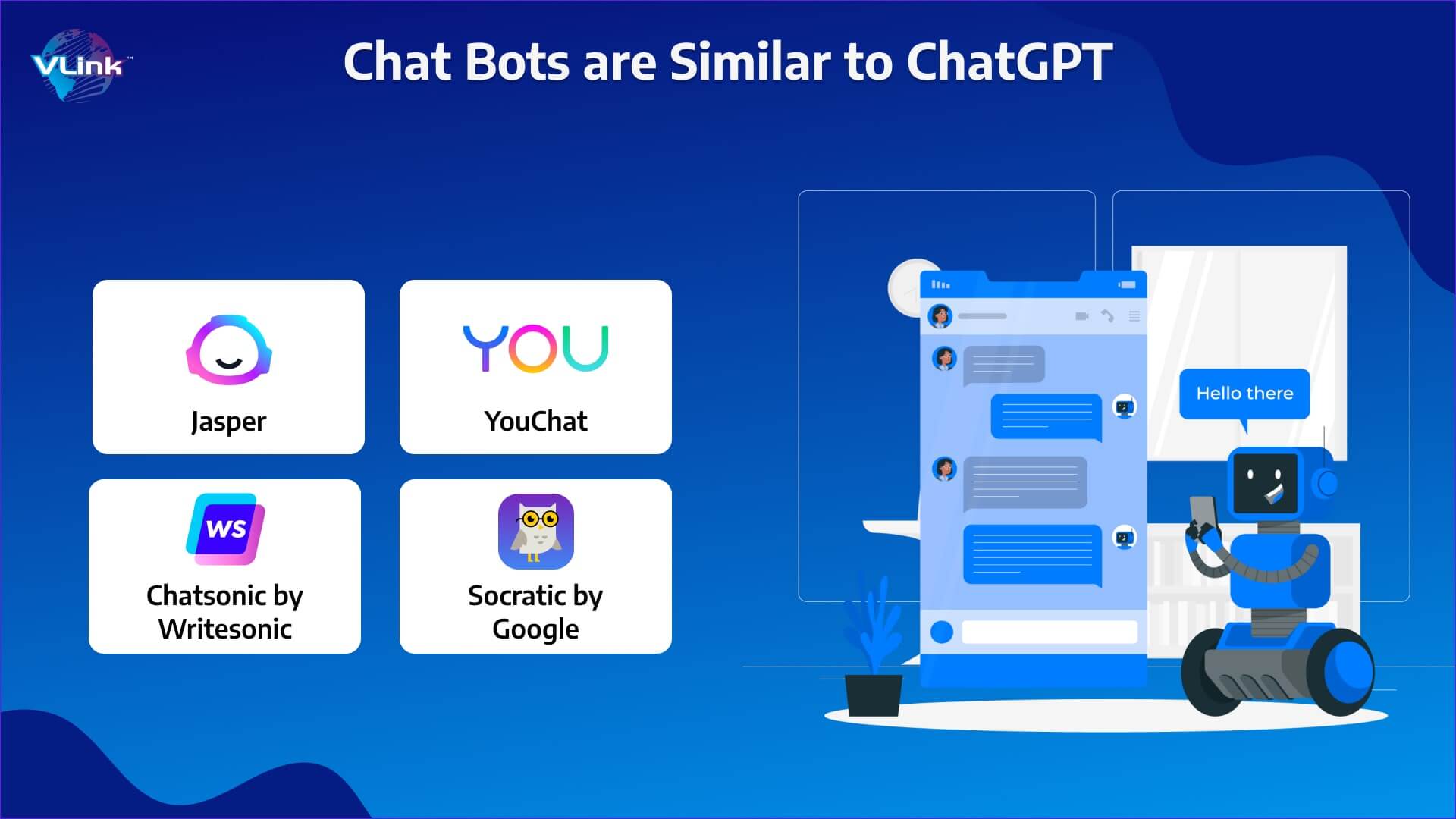
Several chatbots are like ChatGPT, and they are mentioned below with brief descriptions-
- Jasper: Jasper also uses natural language processing to generate responses similar to humans. The language model used by Jasper is the same as that of ChatGPT, but Jasper is a bit different as it provides the user with a wide variety of software development tools for generating better text.
- YouChat: This chatbot has an advantage over its contemporaries as it uses Google as a reference point for sources to dissipate the content. Further, YouChat is also good in terms of functionality, does not have any capacity blocks, and is free.
- Chatsonic by Writesonic: If you want a chatbot that is up to date with current events, then Chatsonic is your solution. Since Google supports it, Chatsonic is up to date with recent news and helps you provide answers related to the latest events. Further, it is also equipped with several cool features, such as voice dictation, in which you can verbally speak the prompts, just as in the case of Alexa.
- Socratic by Google- This chatbot is available on the App Store and Google App Store and has been specially designed to help kids. The kids scan their worksheets and attain questions to their answers with unique and interesting graphics.
Some of the other chatbots like ChatGPT available in the market are Rytr, Ink, Perplexity, and Google Bard.
What is the Future of ChatGPT?
As AI technology continues to advance, ChatGPT is likely to become even more capable. OpenAI is actively working on refining the model and expanding its potential applications. As it becomes more integrated into our daily lives, it has the potential to redefine how we interact with machines and access information.
Choose VLink for ChatGPT Integration Solutions!
VLink is a leading IT service provider that provides comprehensive services with ChatGPT integration and other AI-powered solutions.
Our devoted team of specialists will first have a conversation with you to understand your unique requirements before creating a custom integration plan to integrate ChatGPT into your current systems. We have a strong knowledge of AI and NLP.
Our AI engineers have extensive experience with a range of integration techniques, including system analysis, design, deployment, and testing.
We guarantee easy API connectivity, efficient data interchange, and process automation to enable you to make use of ChatGPT integration's full potential. What else? The key to our successful integration of AI solutions across sectors is that we place a high priority on data security and scalability throughout the integration process.
You may benefit from our comprehensive generative machine learning and AI development services, which will enable you to utilize this language model driven by AI fully.






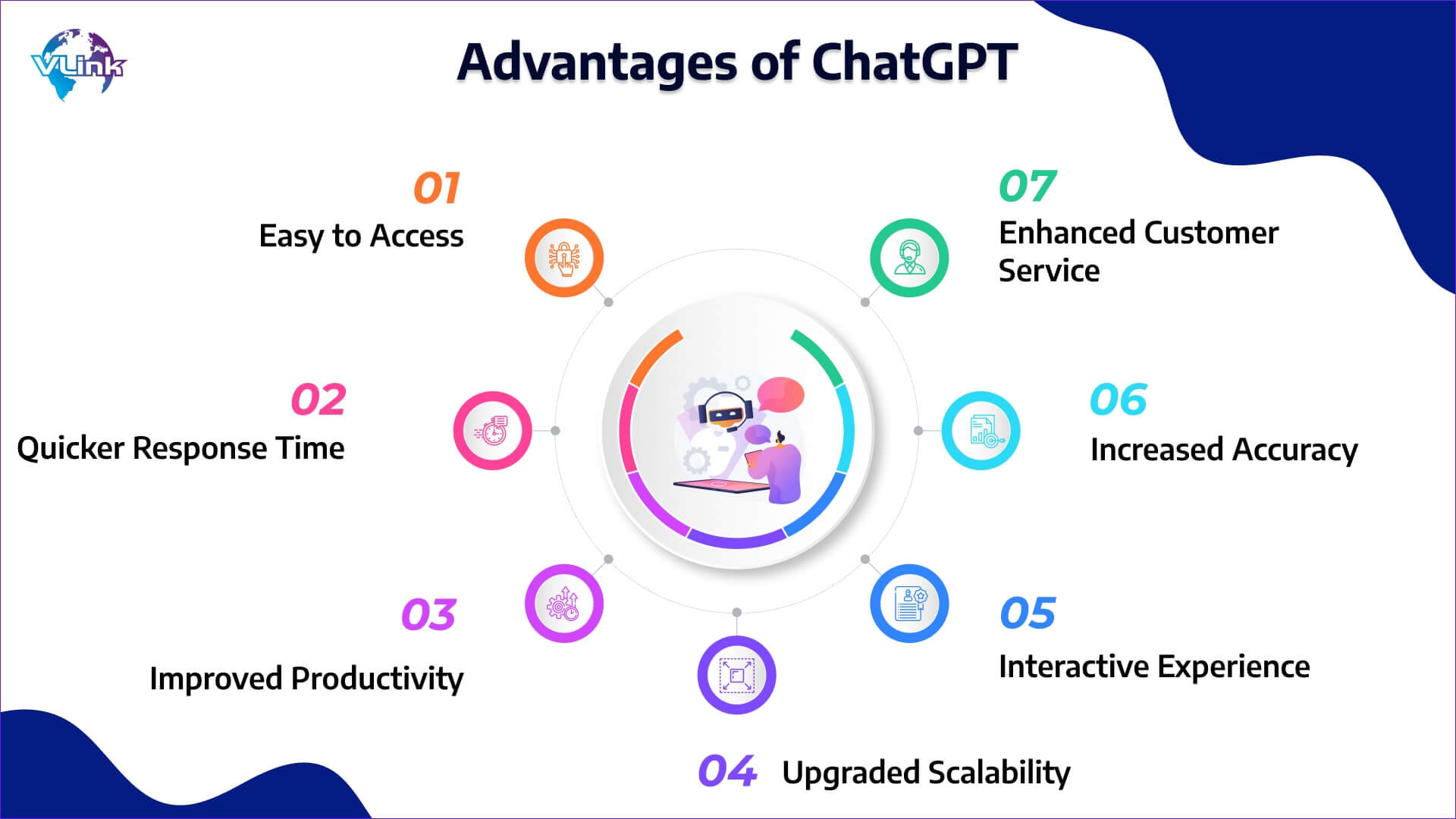


 Shivisha Patel
Shivisha Patel
















